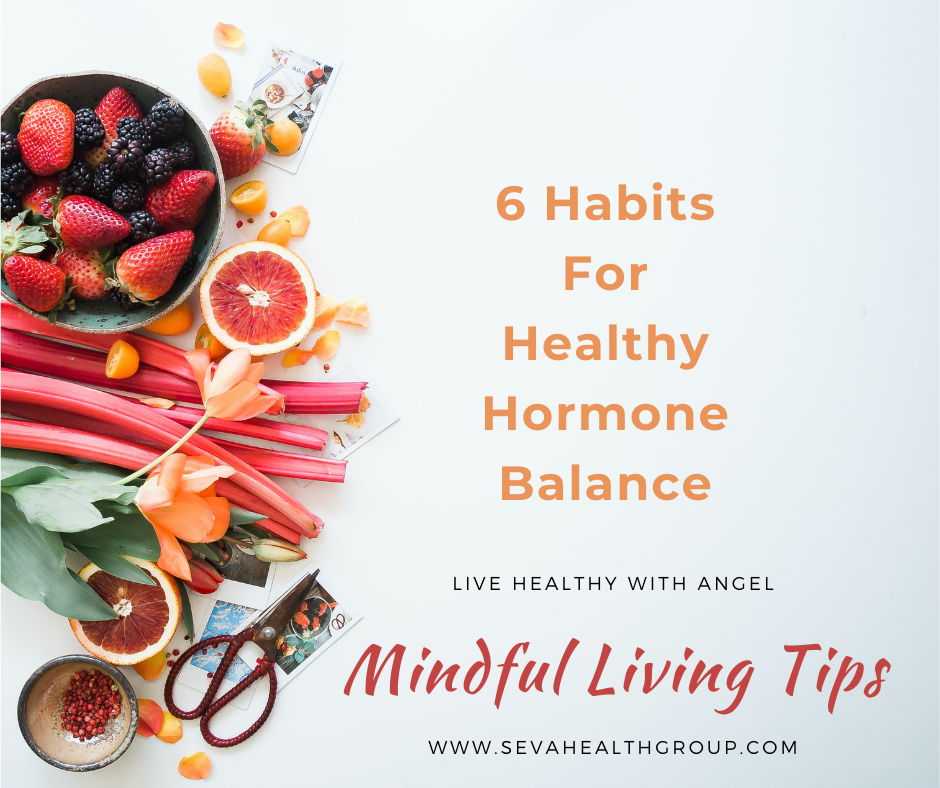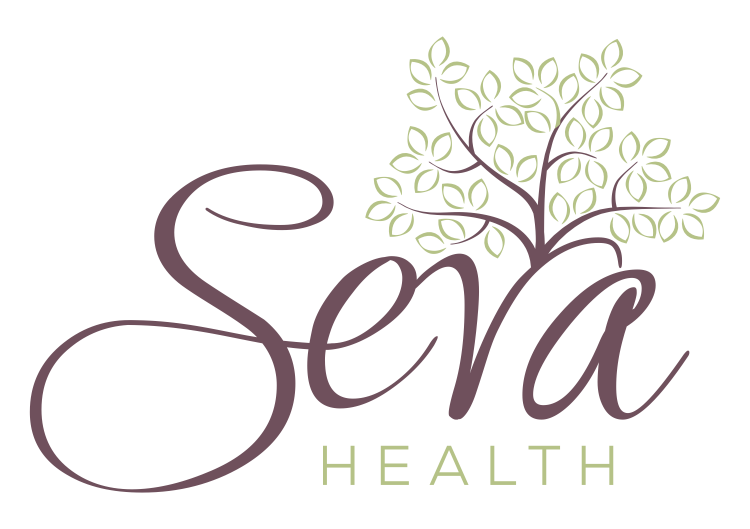
08 Sep Daily Detox: 6 Daily Habits for Healthy Hormone Balance
You know that frustrating moment when the little spinning wheel icon comes up on your computer, telling you that the page you need right now is trying to load but can’t? After clicking ‘wait’ a few times the only thing you can do is shut down all of the other tabs you’ve got open and reboot the whole system? Well that’s what your HPA axis looks like in your brain and body when it’s on overload.
What is the HPA Axis?
HPA stands for Hypothalamic-Pituitary-Adrenal axis, a major neuroendocrine system that controls many of the body’s most important functions including digestion, immune system regulation, energy production, energy storage and expenditure, libido, sexual function, mood and emotions. The HPA Axis also plays an important role in the mental and physical response to stress and undergoes hundreds, if not thousands, of minute-to-minute checks and balances to maintain homeostasis or balance.
Just like a computer that needs to be turned off at night so that the speed and internal memory can be ‘cleaned up’ by the next morning, the HPA Axis functions in a similar way. With adequate rest, nutrition and a healthy hormone balance the HPA Axis can usually manage the tasks put before it each day, including the management of daily stressors. It has the huge responsibility of releasing important chemicals such as cortisol, adrenaline and norepinephrine to get us through the curve balls in life and survive emergencies, too. But with hormone imbalance the HPA Axis putters along just like the computer that’s been left running day after day with fifteen different open tabs — it slows down or shuts down altogether. As we age and the production of important hormones like estrogen and testosterone decline it becomes increasingly important to change habits that create and contribute to what I call HPA Crisis.
Here are 6 of the daily habits that I’ve incorporated into my Fit & Functional For Life health coaching program to help create healthier hormone balance.
1. Cut the caffeine. Caffeine raises the stress hormone cortisol, which tells your body to increase its energy stores through storage of fat. Caffeine also activates the stress axis by elevating glucocorticoid and catecholamine output along with increasing your blood pressure, blood sugar, cholesterol and triglycerides. Long term exposure to elevated glucocorticoids can lead to water retention, weight gain, and mood swings. Yes, cutting the caffeine is difficult but one of the easiest ways to begin reducing your intake is the ‘One Less, One More’ method. Switch to one less cup or one less ounce of caffeine per day in favor of one more cup or one more ounce of decaffeinated herbal tea or water per day. You can also retrain your tastebuds by adding flavorful extracts and spices in your tea such as almond, vanilla, ginger, cinnamon, nutmeg and allspice. Consider adding natural fruits to flavor your water if you find it to be too bland. If morning energy is a problem, here are a few of my favorite coffee alternatives: chai tea, mint tea (spearmint and peppermint), golden milk latte with turmeric, Dandy Blend and red rooibos tea.
Long term exposure to elevated glucocorticoids can lead to water retention, weight gain, and mood swings. Yes, cutting the caffeine is difficult but one of the easiest ways to begin reducing your intake is the ‘One Less, One More’ method. Switch to one less cup or one less ounce of caffeine per day in favor of one more cup or one more ounce of decaffeinated herbal tea or water per day. You can also retrain your tastebuds by adding flavorful extracts and spices in your tea such as almond, vanilla, ginger, cinnamon, nutmeg and allspice. Consider adding natural fruits to flavor your water if you find it to be too bland. If morning energy is a problem, here are a few of my favorite coffee alternatives: chai tea, mint tea (spearmint and peppermint), golden milk latte with turmeric, Dandy Blend and red rooibos tea.
2. Clean the cabinets. Environmental toxins are sneaky. They infiltrate our bodies over time through common every day practices and products that seem quite innocuous at first glance, largely due to false advertising claims, celebrity endorsements as well as very creative marketing and ad design. Look closely at your product labels and start ditching products that contain EDCs or Endocrine Disrupting Chemicals. EDCs can mimic hormones, cause overstimulation or even block normal hormone production and lead to inflammation, insulin resistance, water retention and weight gain, thyroid dysfunction and immune system dysregulation. Read your personal beauty and cleaning product labels and eliminate products that contain: Bisphenol-A, parabens, polychlorinated biphenyls (PCBs), phthalates, triclosan, organophosphates and dioxins.
3. Load up on fiber, fermented foods and antioxidants. Dysbiosis the the clinical name given to a gut microbiome that is ‘out of balance.’ There may be too much of a bacteria that’s not healthy and too little of the helpful ones like lactobacillus and the gram-positive bifidobacterium which starve out the harmful bacteria. Leaky gut is a clinical condition in which there is damage to one or more of the four protective layers of the intestinal lining that should be smooth and intact. Leaky gut allows fragments of bacteria to ‘leak’ into the layer of your intestinal lining that communicates with your immune system, triggering inflammation, hormone disruption, insulin resistance and weight gain. Switching out highly processed foods in favor of antioxidant rich fermented foods, natural dietary fibers, and slow-burning carbohydrates are the ‘main ingredients’ for a healthier gut microbiome and intestinal lining.
4. Track your water intake. For decades, scientists have known that a brain region called the lamina terminalis  controls human thirst. But as we age, those thirst mechanisms change and the risk of dehydration increases. Even mild dehydration can cause the hypothalamus to release hormones that will retain water in an attempt to regain adequate fluid balance. Dehydration also creates a physical stress on the body which can lead to more cortisol release. Aim for at least 8-10 eight ounce glasses of water per day unless you’ve been told by your own healthcare provider to restrict your water intake for health reasons. Smartphones with timers and apps like FitBit and Evernote are helpful for maintaining a log and a reminder.
controls human thirst. But as we age, those thirst mechanisms change and the risk of dehydration increases. Even mild dehydration can cause the hypothalamus to release hormones that will retain water in an attempt to regain adequate fluid balance. Dehydration also creates a physical stress on the body which can lead to more cortisol release. Aim for at least 8-10 eight ounce glasses of water per day unless you’ve been told by your own healthcare provider to restrict your water intake for health reasons. Smartphones with timers and apps like FitBit and Evernote are helpful for maintaining a log and a reminder.
5. Love your liver. The two master detoxifiers and waste eliminators in the body are the liver and kidneys and when it comes to hormone balance your liver takes the front seat. Estrogens are eliminated from the body by metabolic conversion to inactive metabolites that are excreted in the urine and/or feces. The first step of metabolism of estrogens mainly occurs in the liver. A major metabolite of estradiol, 2-hydroxyestradiol, is mainly catalyzed (or broken down) by two important enzymes found in the liver: CYP1A2 and CYP3A4. Maintaining a plant-based diet rich in cruciferous vegetables like broccoli has been found to help with estrogen metabolism and detoxification. Don’t like broccoli? Don’t worry. There are many more cruciferous vegetables to choose from including: argula, bok choy, brussel sprouts, cabbage, cauliflower, chinese broccoli, chinese cabbage, collard greens, daikon, garden cress, horseradish, kale, kohlrabi, komatsuna, land cress, mizuna, mustard (seeds and leaves), radish, rutabaga, tatsoi, turnips (roots and greens), wasabi and watercress.
6. Go to sleep. Nothing disrupts hormone balance like sleep deprivation. There is no substitute for a good  night’s rest and giving your brain and your body a chance to ‘turn down.’ Blue light emitted from electronics blocks the sleep hormone melatonin and send signals to your brain that it’s time to wake up and start moving, triggering the HPA axis and release of cortisol and other stress hormones. During sleep, your gut gets a rest, digestion slows and the production of gut friendly bacteria have the opportunity to proliferate. It’s also a time when your brain undergoes its own detoxification through use of its glial cells. The brain also consolidates the day’s events into memories during sleep which ‘frees up’ your mental bandwidth for new knowledge. Aim for a minimum of 7-8 hours of restorative sleep every night. Having a consistent night time ritual like baths, meditation, restorative yoga, t’ai chi and QiGong breathing practices can all help.
night’s rest and giving your brain and your body a chance to ‘turn down.’ Blue light emitted from electronics blocks the sleep hormone melatonin and send signals to your brain that it’s time to wake up and start moving, triggering the HPA axis and release of cortisol and other stress hormones. During sleep, your gut gets a rest, digestion slows and the production of gut friendly bacteria have the opportunity to proliferate. It’s also a time when your brain undergoes its own detoxification through use of its glial cells. The brain also consolidates the day’s events into memories during sleep which ‘frees up’ your mental bandwidth for new knowledge. Aim for a minimum of 7-8 hours of restorative sleep every night. Having a consistent night time ritual like baths, meditation, restorative yoga, t’ai chi and QiGong breathing practices can all help.
Want more valuable tips like these? Sign up for my newsletter, Healthy Housecalls With Angel and subscribe to my YouTube channel for more tips, tools, and strategies to get Fit & Functional For Life!

No Comments